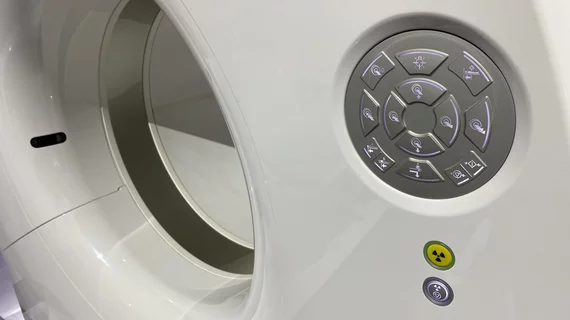Cardiac PET on the rise among U.S. cardiologists
The use of positron emission tomography (PET) to assess Medicare patients for signs of coronary artery disease (CAD) is on the rise, according to a new analysis published in the Journal of Nuclear Cardiology.[1] In fact, cardiac PET is now the second most frequently used imaging modality for CAD evaluations, trailing only single-photon emission computed tomography (SPECT).
The study’s authors tracked Medicare data, noting that U.S. heart teams billed for approximately 1.3 million SPECT exams, 212,000 PET myocardial perfusion imaging (MPI) exams, 202,000 stress echocardiography exams, 119,000 coronary CT angiography (CCTA) exams and 4,000 stress MRI exams in 2022. Of those PET MPI exams, 46% were PET/CT and 39% included myocardial blood flow (MBF) measurements.
“Although the use of SPECT has decreased in recent years, it remains by far the most common modality,” wrote first author Mouaz Al-Mallah, MD, MSc, a cardiologist with Houston Methodist Hospital and former president of the American Society of Nuclear Cardiology (ASNC), and colleagues. “Approximately one half of PET scans in the U.S. do not utilize CT, which limits the ability to assess concomitantly for atherosclerosis.”
Key takeaways from the group’s research included:
- The use of cardiac PET for evaluating CAD has increased by approximately 25% from 2018 to 2022. CT and MRI also saw increases over the same time period, though the use of SPECT and stress echocardiography dropped.
- A significant majority (86.2%) of PET MPI exams were performed by cardiologists. Cardiologists also performed most stress echocardiography (94%), SPECT MPI (84.2%) and stress MRI (83.5%) exams, but not CCTA (38.1%).
- The median number of PET studies per reader was 58, slightly lower than the median for SPECT (63), but much higher than other modalities.
Al-Mallah et al. also emphasized that PET’s ability to quantify MPF remains one of its greatest advantages, calling for improved “education and awareness” among healthcare providers about the subject.
In addition, they said that performing PET MPI with PET/CT systems “provides excellent attenuation correction and allows for the simultaneous assessment of coronary atherosclerosis.”
“Numerous studies have demonstrated that this combined approach is important for the management of patients,” the authors wrote. “For example, coronary artery calcium scoring, can further improve risk stratification in patients undergoing PET even among those with normal perfusion. CT scans can also be used to diagnose important extra cardiac findings such as breast or lung nodules and masses. Despite these advantages, our data shows that just over half of the scans used PET/CT, while others used dedicated PET systems.”
When reviewing all of these findings, the group concluded that any barriers limiting the growth of PET, especially when used together with CT, need to be addressed.
Click here to read the full analysis in the Journal of Nuclear Cardiology, an ASNC journal.

